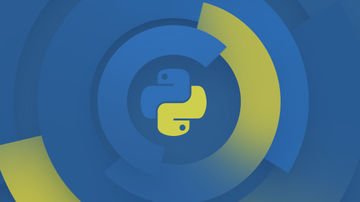ML.NET使用LearningPipeline类定义执行期望的机器学习任务所需的步骤,让机器学习的流程变得直观。
下面用鸢尾花瓣预测快速入门的示例代码讲解流水线是如何工作的。
using Microsoft.ML;using Microsoft.ML.Data;using Microsoft.ML.Runtime.Api;using Microsoft.ML.Trainers;using Microsoft.ML.Transforms;using System; namespace myApp{ class Program { // STEP 1: Define your data structures // IrisData is used to provide training data, and as // input for prediction operations // - First 4 properties are inputs/features used to predict the label // - Label is what you are predicting, and is only set when training public class IrisData { [Column("0")] public float SepalLength; [Column("1")] public float SepalWidth; [Column("2")] public float PetalLength; [Column("3")] public float PetalWidth; [Column("4")] [ColumnName("Label")] public string Label; } // IrisPrediction is the result returned from prediction operations public class IrisPrediction { [ColumnName("PredictedLabel")] public string PredictedLabels; } static void Main(string[] args) { // STEP 2: Create a pipeline and load your data var pipeline = new LearningPipeline(); // If working in Visual Studio, make sure the 'Copy to Output Directory' // property of iris-data.txt is set to 'Copy always' string dataPath = "iris-data.txt"; pipeline.Add(new TextLoader(dataPath).CreateFrom<IrisData>(separator: ',')); // STEP 3: Transform your data // Assign numeric values to text in the "Label" column, because only // numbers can be processed during model training pipeline.Add(new Dictionarizer("Label")); // Puts all features into a vector pipeline.Add(new ColumnConcatenator("Features", "SepalLength", "SepalWidth", "PetalLength", "PetalWidth")); // STEP 4: Add learner // Add a learning algorithm to the pipeline. // This is a classification scenario (What type of iris is this?) pipeline.Add(new StochasticDualCoordinateAscentClassifier()); // Convert the Label back into original text (after converting to number in step 3) pipeline.Add(new PredictedLabelColumnOriginalValueConverter() { PredictedLabelColumn = "PredictedLabel" }); // STEP 5: Train your model based on the data set var model = pipeline.Train<IrisData, IrisPrediction>(); // STEP 6: Use your model to make a prediction // You can change these numbers to test different predictions var prediction = model.Predict(new IrisData() { SepalLength = 3.3f, SepalWidth = 1.6f, PetalLength = 0.2f, PetalWidth = 5.1f, }); Console.WriteLine($"Predicted flower type is: {prediction.PredictedLabels}"); } }} |
创建工作流实例
首先,创建LearningPipeline实例
| 1 | var pipeline = new LearningPipeline(); |
添加步骤
然后,调用LearningPipeline实例的Add方法向流水线添加步骤,每个步骤都继承自ILearningPipelineItem接口。
一个基本的工作流包括以下几个步骤,其中,蓝色部分是可选的。

加载数据集
继承自ILearningPipelineLoader接口。
一个工作流必须包含至少1个加载数据集步骤。
| 123 | //使用TextLoader加载数据string dataPath = "iris-data.txt";pipeline.Add(new TextLoader(dataPath).CreateFrom<IrisData>(separator: ',')); |
数据预处理
继承自CommonInputs.ITransformInput接口。
一个工作流可以包含0到多个数据预处理步骤,用于将已加载的数据集标准化,示例代码中就包含2了个数据预处理步骤。
//由于Label文本数据,算法不能识别数据,需要将其转换为字典pipeline.Add(new Dictionarizer("Label")); //算法只能从Features列获取数据,需要数据中的多列连接到Features列中pipeline.Add(new ColumnConcatenator("Features", "SepalLength", "SepalWidth", "PetalLength", "PetalWidth")); |
选择学习算法
继承自CommonInputs.ITrainerInput接口。
一个工作流必须且只能包含1个学习算法。
| 12 | //使用线性分类器pipeline.Add(new StochasticDualCoordinateAscentClassifier()); |
标签转换
继承自CommonInputs.ITransformInput接口。
一个工作流可以包含0到多个标签转换步骤,用于将预测得到的标签转换成方便识别的数据。
| 12 | //将Label从字典转换成文本数据pipeline.Add(new PredictedLabelColumnOriginalValueConverter() { PredictedLabelColumn = "PredictedLabel" }); |
执行工作流
最后,调用LearningPipeline实例的Train方法,就可以执行工作流得到预测模型。
| 1 | var model = pipeline.Train<IrisData, IrisPrediction>(); |

 随时随地看视频
随时随地看视频




